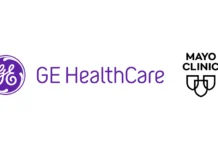In the fast-changing world of healthcare technology, Asia happens to be emerging as a worldwide leader not just in terms of adoption, but also when it comes to innovation in regulatory frameworks. Epicentre of this transformation happens to be the rise of digital health sandboxes in Asia – which is a pivotal development in speeding up refinement, testing, and rollout of cutting-edge healthcare technologies within the clinical environments. Apparently, the sandboxes go on to offer a very controlled yet flexible environment for regulators, innovators, and also healthcare providers to explore collaboratively the new digital health solutions and at the same time ensure efficacy, safety, and also compliance.
Digital health sandboxes – the concept and importance
It is well to be noted that the digital health sandbox happens to be a regulatory innovation that enables startups as well as established companies to shift new healthcare technologies within real-world settings with, of course, scrutiny by regulatory bodies. This sort of concept, which happens to be borrowed from fintech, has rapidly gained traction within healthcare because of the sector’s requirement for innovation, which is balanced with data privacy and patient safety. With sandboxes, regulators can look forward to an environment where there is real-time feedback and also fast policy alterations, which help overcome the traditional barriers in terms of innovation within healthcare.
It is worth noting that the healthcare landscape in Asia is characterized by distinct populations, healthcare infrastructure that is variable, as well as rising chronic disease burdens and also presents very unique opportunities as well as challenges for digital health innovation.
The fact is that digital health sandboxes in Asia offer hospitals a very safe space in order topilot technologies, right from AI-powered diagnostic tools as well as variable health monitors to patient records that are blockchain enabled, without having any kind of regulatory burden that goes on to delay the rollout.
The catalyst when it comes to hospital tech pilots – Regulatory innovation
The proliferation when it comes to digital health sandboxes in Asia crops up from a wider wave of regulatory innovation, which is aimed at creating responsive governance frameworks. Countries such as South Korea, Singapore, and Japan have already taken proactive steps by way of establishing regulatory sandboxes especially designed to fast-pace the digital health development.
The Health Sciences Authority—HSC of Singapore, for instance, has launched a regulatory sandbox program that allows controlled testing when it comes to digital therapeutics as well as AI health applications. This kind of approach enables start-ups to bring in novel solutions within clinical settings, and that too with a decreased time to market while at the same time upholding the stringent safety standards. The regulatory approach of a sandbox, which is structured yet flexible, helps in experimentation along with iterative enhancement, which is based on real-world data.
The Ministry of Food and Drug Safety in South Korea has similarly gone on to enact regulatory reforms that happen to accommodate digital health innovations by way of pilot programs as well as approvals that are very fast. These kinds of efforts make sure that hospital technology pilots can go ahead without being hindered by certain legacy regulations, which have been designed for traditional medical devices, thereby catalyzing innovation throughout the healthcare ecosystem.
The real-world application as well as the effects of hospital tech pilots
It is well to be noted that digital health sandboxes in Asia are not just a theoretical concept; they are actually driving a host of hospital technology pilots and offering results that are tangible. Apparently, these pilots happen to test a wide range of innovations, which include AI-enabled diagnostic platforms, telemedicine solutions, remote patient tracking systems, and also health data interoperability tools.
For example, in Japan, there are several hospitals that are piloting AI-driven imaging diagnostics within the sandbox programs, which, by the way, are drastically reducing the time that is actually required for precision cancer detection and, at the same time, maintaining patient safety along with regulatory compliance. In the same way, hospitals in Singapore have already tested telehealth platforms that are integrated with AI systems by helping with rapid patient evaluation and also decreasing the not-so-required hospital visits during the COVID-19 pandemic.
Remote patient monitoring happens to be yet another major area where sandboxes have gone on to facilitate innovation. Pilot programs in South Korea have involved variable sensors along with mobile health applications in order to track chronic disease metrics, thereby delivering real-time data to teams and hospitals. This kind of continuous tracking enhances the patient outcomes by way of catching early warning signs and also helping timely interventions. This is an approach that is only feasible by way of sandbox-enabled partnership, which can take place between innovators and regulators.
The considerations along with challenges that are involved in sandbox execution
Although the digital health sandboxes in Asia are proving to be very powerful tools when it comes to speeding up hospital pilots, their execution is not without any kind of barriers. Partnership among diverse stakeholders such as regulatory authorities, healthcare providers, patients, and technology developers is intricate, needs much more transparent communication, and also needs roles that are clearly defined.
Data privacy along with security concerns are also paramount, specifically given the very sensitive nature when it comes to health information and the rising use of cloud-based as well as AI-driven technologies. Making sure of compliance along with data protection laws like the one in Singapore, which is PDPA, and PIPA in South Korea is necessary to maintain public trust and also regulatory approval within the sandbox environment.
Besides this, the scalability when it comes to solutions tested in a sandbox presents yet another hurdle. Innovations that are proved in the limited pilot settings have to transition into broad clinical usage without losing any kind of safety or efficacy and thereby demand robust post-market surveillance along with adaptive regulatory oversight.
The future when it comes to digital health sandboxes in Asia
The fact is that the momentum when it comes to digital health sandboxes in Asia shows no signs of slowing at all. As the healthcare systems go ahead and modernize, the regulatory spectrum is anticipated to evolve further by way of embracing adaptive along with risk-based approaches that go on to prioritize patient outcomes as well as innovation.
The future course of action includes broadening the sandbox partnerships across the borders, thereby enabling regional interoperability as well as data sharing, which can speed up the learning as well as scaling of successful technologies. With the integration when it comes to patient as well as clinical feedback within sandbox governance models, there will be an elevation in the acceptance and relevance of hospital tech pilots.
Artificial intelligence along with machine learning is going to play a very vital role in sandbox projects because they offer predictive insights along with dynamic risk evaluations, which would help regulators as well as providers to make informed and proactive decisions. This kind of balance between technology and regulations goes on to mark a new era that is completely based on evidence for policymaking in healthcare.
Conclusion
Digital health sandboxes in Asia happen to represent a very transformative pivot in healthcare innovation. By way of creating supportive environments as well as ones that are flexible for testing along with new technologies, the sandboxes are actually dismantling the old barriers and hence speeding up the adoption and ultimately enhancing the patient care.
The leadership of Asia in regulatory innovation not only has an advantage for its own populations, but it also sets a global example when it comes to innovation, harmonizing safety, and accessibility within the digital health spectrum. As hospitals continue to make utmost use of sandbox frameworks, the future looks indeed very promising in terms of a healthcare ecosystem that is patient-centered, swift, and also technologically forward.


















